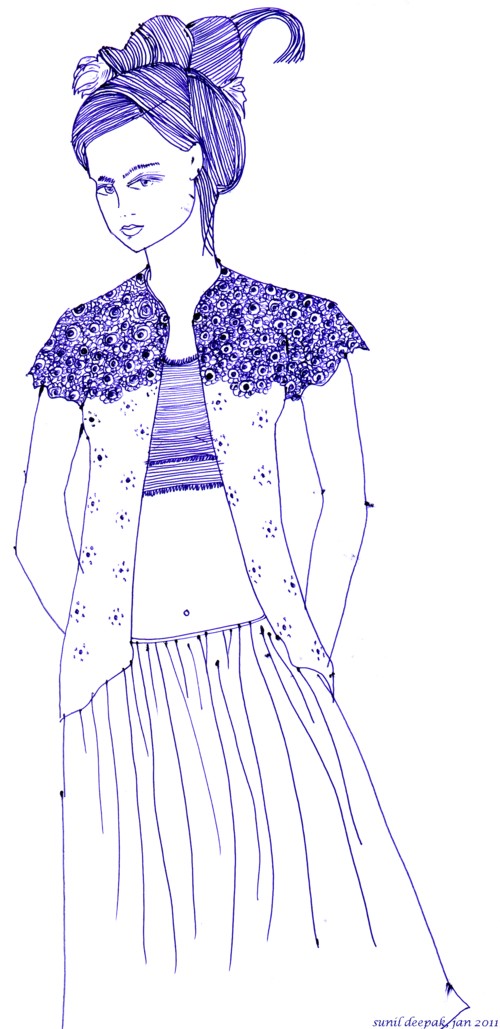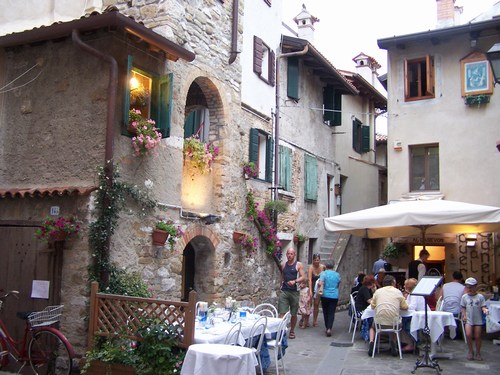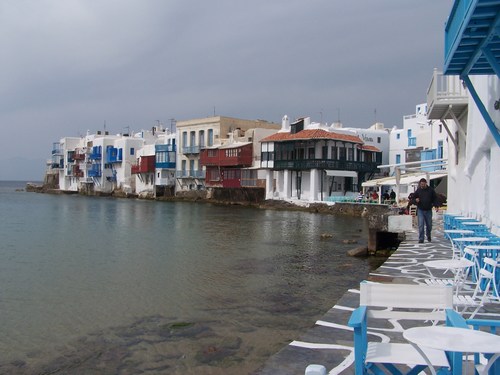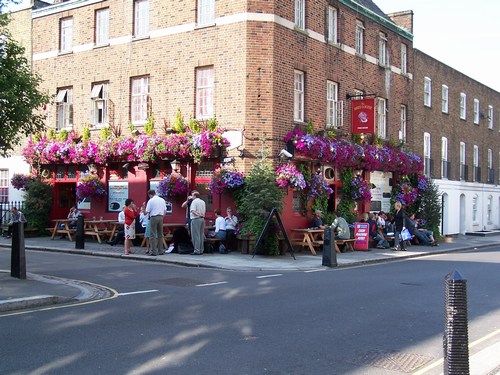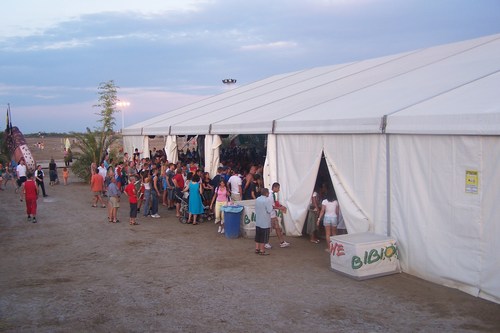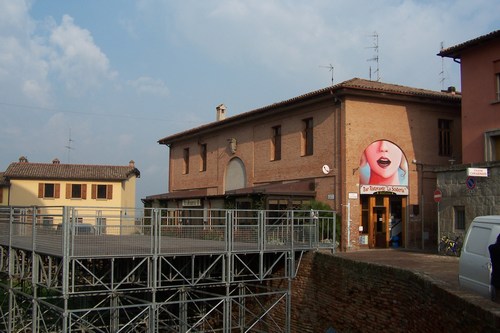Knowledge of the world in ancient India
Ancient people living in different parts of the world had knowledge of different groups of persons living in different parts of the world, and had visits and communications among them, according to Sen. Some of the geographical areas mentioned in the book and their old Indian names in ancient Hindu sacred books are as follows:Jambu dweep: Mainland Asia (or mainland Indian subcontinent)
Ang dweep: Sumatra
Java: Yav dweep
Malay dweep: Malaysia
Shankh dweep: Borneo
Kush dweep: Africa mainland
Varaha dweep: Madagascar
Swarn dweep: Sri Lanka
Andhralay: Australia
Kolavarah or Ketumaal dweep: Norway
Aryaviryan: Azerbaijan
Origin of Clans that peopled India
According to Sen, the stories of different clans that later peopled India cover the geographical areas that start from northern India in the east and goes up to Gulf of Persia and the coast of Caspian sea in the west. In fact all the important clans that peopled India and many other countries started somewhere near Caspian sea around 4 to 5 thousand BC.Many different clans of people who later grew as very different people, originated from the same groups of persons near the Caspian coast. Thus the three most important bloodlines that peopled India – Dev, Danav and Daitya, originated from the same family.
There were other groups of people such as Garud and Naag near the Caspian coast and Pichash, Gandharav and Kinnar, in the northern part of mountainous India.
Original families near the Caspian coast and the first waves of emigration towards India
The story starts some where around 4 to 5 thousand years BC, at the beginning of Satyug, on the south coast of Caspian sea, with the family of Swayambhu Manu. Manu had two sons, Priyavrata and Utanpaad. That land was divided into four areas – Sugd, Maru, Varvadhi and Nisha. Later on Harayu (Herat) and Vakrit (Kabul) also joined the western areas.About 4000 years BC, Nabhi, grandson of Priyavrata moved east towards the area of Sapt Sandhu. Bharat, grandson of Nabhi, gave the name Bharat Varsh to that land.
Reverse emigration, back from Sapta Sindhu towards the Caspian sea
In a few generations, the families that had moved east, lost contact with the families in the west. In any case, even in the west, families from the same forefathers, were fighting with each other for power and domination. Thus, children of Chakshuk Manu, a descendent of Uttanpaad line of family, with a kingdom in Sapt-Sandhu, decided to go to the west and attack the kingdoms there. Five sons of Chakshak Manu - Atyarati, Jananpati, Manyu (Abhimanyu), Ur, Pur and Taporat, took part in the battle expedition to the west. One of the sons of Ur, called Angira, accompanied his father in the war. This expedition had success and they established different kingdoms in different parts of the western lands.Thus elder sons, Atyarati and Janapati settled in the central part of West Asia. Ancient Persian history speaks of Manu as Manyu, while Greeks called him Maimnen. He built the city of Manyupuri or Susha. Ur dominated parts of Africa, Syria and Babylonia. Pur settled south of Caspian sea and gave his name to Persia. Taporat settled in Taporia region (Manjadiran). Angira went off in Africa.
Alborz mountain in Taporia region was considered as paradise. On the mountain lived Tapsi Vikuntha and his son Vaikuntha, and thus the area was known as Vaikuntha-dham in ancient Indian texts. The attack of the five brothers wreaked wide-spread destruction and the event is recorded in ancient Persian history as “destruction of paradise” and the five brothers were called Aahirman or Shaitan.
The big floods in the paradise
A few centuries later, about 3,200 BC, the big rivers in ancient Persia had huge floods, probably after the eruption of a volcano in the western coast of Caspian sea, near the city of Baku.All the western part of Persia, and parts of Babylonia were submerged in water. Palestine, that is 6000 feet above sea level was also submerged. Only the high mountains reaching up to 18,000 feet were not submerged. These floods have been recorded in almost all the different ancient texts.
Accounts of Manu being saved by a Matasya (fish) in the ancient Hindu text Matasya-Puran, probably refer to saving of Dev clan persons by fishermen from the Caspian sea coast area.
Daughters of Daksha and their children
Shortly after the floods, important new clans were born that will have important impact on the whole region, from Africa in the west to India in the east. These clans came from the daughters of Daksha, from the clan of Swayambhu Manu.Aditi, one the daughters of Daksha gave birth to 12 sons. Varun, the eldest son, established the Sumerian clan in Susha. In the lands laid dead by the floods, he built canals for draining the water and flattened the earth, making it fit for agriculture. All these works gave Varun the name of life giver or Brahma, as well as the lord of water. Varun's children took the name of Dev clan. They gave the name Ksheersagar to the bay to the south of their land (Bay of Persia).
Children of Vivaswan Surya, the youngest son of Aditi, established the Suryavanshi clan of Aryans, who occupied north India. Vivaswan Surya married Renu from the family of Bhrigu, son of his eldest brother Varun. Surya and Renu had five children - Vaivasvat manu, twins Yam and Yami, then, another pair of twins, Nasatya and Dasr (also known as Ashwini Kumars).
Growing up, Yam went to his uncle Varun, who made him king of land called Aavivard or Dozakh or Nark, a land that had been completely destroyed by the floods and thus, known as the "land of dead".
Other children of Aditi, such as Vasu, Maru, Bhanu. Ghosh, Sandhya, etc. gave rise to other clans. Rudra, an important figure in Hindu mythology in this line was born in the family of Vasu.
Another daughter of Daksha, Diti, gave birth to Daitya clan. A third daughter, Danu, gave rise to Danav clan. The society was matrilineal, that means only mothers name was important.
Initially all the clans were inter-marrying. But as time passed, the fights among different clans started, called Deva-Asur wars.
Indra, born at the Caspian coast, slowly became friends with Varun and Dev clan. It was the time when writing of first Veda (Rigveda) was starting. Varun's son Vashisht made some of the Richa (poems) for this book. Indra asked his friend Narad, step brother of Vashista to make some richa about him. Later on other persons in the clans, when they heard the richa about Indra, asked for some richa in their names.
Chandra from the family of Bhrigu, fell in love with Tara, wife of Brihaspati, a priest of Dev clan and ran away with her. Brihaspati with help of other clans declared war on Deva clan, and Devas lost the war. Tara was sent back to Brihaspati, but she was pregnant with Chandra's son. When the child, Budh was born, Brihaspati refused to keep him and he was sent back to Chandra.
Migration of Aryas to India and attack on Sat Sindhu
Vaisvat Manu (eldest son of Vivaswan Surya) and Chandra, both decided to emigrate to the east, and together constituted the two main Arya clans in north India. Vaisvat Manu settled near Saryu river and started the suryavanshi clan of Aryans, while Chandra settled near the meeting place of the two rivers, Ganga and Yamuna and started the Chandravanshi clan of Aryans.Some time later, Indra attacked Vritra, the king of Sapta-sandhu area from the Daitya clan. Though Vritra had good relationships with Deva clan, Deva clans chose not to interfere in Indra's attack. Vritra was killed by Indra, that led to the destruction of the major cities of Sapt-Sindhu (the ruins of Harappa and Mohan Jo'daro).
A few centuries later, the main clans ruling in the western part in Elavrat, gradually became less important and were mixed up with other population groups.
Conclusions
The above is just a simplified summary of Acharya Chatur Sen's theory of early settlements in ancient world and in ancient India, where waves of people came in from the west, spreading not just in India, but also inhabiting Indonesia, Malaysia, Australia on the east and Africa on the west.Sen's history has three key events linked to India's inhabitation.
(1) The first settling down of people around Sapt-Sindhu, around 4,000 years BC and then, after some generations, return of some of these people back to the west to the Caspian sea.
(2) The second settling of Aryavrata in north India by Surya and Chandra clans around another 1000 years later.
(3) Some time later, there was another attack of people from the west on the kingdoms of Sapt Sindhu.
In Vayam Rakshamah, Sen also looks at the development of different clans of kings living in India, in Aryavrat and in the south in Dandkaranya and Dakshinaranya, that I have ignored in this article. For people interested in understanding more of Chatur Sen's theory of early settlements of people in what we know as India and middle east, read Vayam Rakshamah.
End of part 3. The first part of this essay introduced the figure of Chatur Sen and his works. The second part of the essay explained the broad context of Chatur Sen’s writings.




.jpg)
